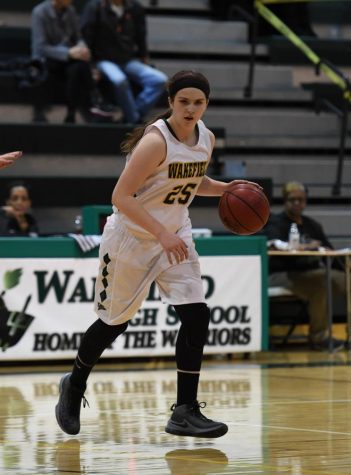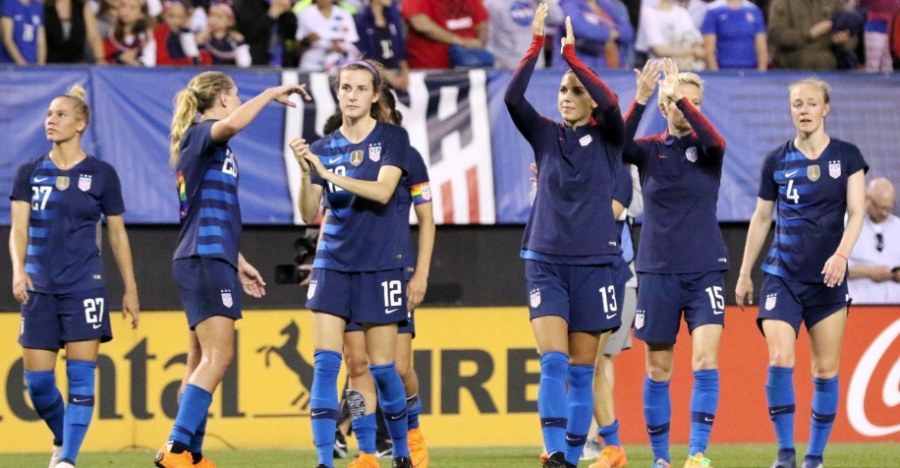US Women’s Soccer Fights for Equality
March 8th was International Women’s Day. It was also the day the U.S. Women’s Soccer team sued U.S. Soccer for gender discrimination…again. To learn some of the history of the pay discrimination in women’s sports, click here.
Here’s what is happening this time:
U.S. Soccer pays their male and female players differently. Period. All the arguments have been made, from having different amounts of views to bringing in profit to having different endorsement deals and so many more. All of these are wrong. The U.S. Women’s team is better then the Men’s team; they had the highest TV ratings for a U.S. Soccer game in history, they have just as many (if not more) endorsement deals with companies, and the women bring in a big profit yearly, while the men have been making a small profit or even losing money for U.S. Soccer over the past few years.
The damning evidence is when you look at the salary that the players would earn if they played the same amount. If both teams played 20 friendlies (games against other countries but not related to a tournament) and won all 20, the Women’s National Soccer team members would be paid a maximum of $4,950 per game, or $99,000 total. The Men’s National Soccer team members are paid between $5,000 and $17,625 per game, and would earn an average of $263,320 total (depending on the skill level of the opposing teams.)
Furthermore, the World Cup payment for 2014/2016 is extremely uneven. The men lost in the Round of 16 and was paid a total of $5,375,000. The women won the World Cup and was paid a total of $1,725,000. That is 32% of the pay that the men get! Indisputable gender discrimination. For more of the pay difference, here is the full lawsuit.
But these women aren’t just fighting for pay equity, they are looking to be compensated on all levels of the women’s program. Star player Megan Rapinoe told ABC, “We don’t feel like we are funded equally from top to bottom and that’s really what we’re fighting for, sort of a holistic approach to both programs for the federation.” The team is also making it known that their younger programs aren’t getting the same investment as the men’s youth teams, which is accounting for some of the differences in views. The overall message from the team is to young girls. Rapinoe said, “You should fight for what you believe in. You should fight for what you feel you earn and never give up. Sometimes it will feel like a David and Goliath type situation… but we know we are on the right side of this.” The Men’s National Team players have come out in support of the women, and so have many of their sponsors. On March 8th, Adidas made a pledge to pay equal World Cup bonuses to the men and women they sponsor.
In 2017, the U.S. Women’s Hockey team threatened to boycott the World Championship, where they were the favorites to take home the gold. They gained support from the country, especially other female athletes. The USWNT mentored them, telling them what to say and not say to get their way. It was a big risk that ended up paying off. U.S. Hockey made an agreement with the women’s team that they would be treated equally to the men. This was a big moment in Women’s sports history, but no other organizations joined the movement.
In the Washington Post, Barry Svrluga wrote, “What the soccer experience is showing us is that, unfortunately, other organizations didn’t look at what happened in hockey and say, “You know what? Let’s kind of follow suit.” Turns out that’s far too altruistic for the people who govern sports. Turns out it takes action from the aggrieved to right the wrongs. So here come the women of the U.S. National Soccer team, months before the World Cup in France, daring their bosses to see them in court.” Say it louder for the people in the back, Barry!
Last Friday, a full week after the lawsuit was filed, the President of U.S. Soccer, Carlos Cordeiro, finally responded to the lawsuit. He says he was “surprised by the complaint” and denies that U.S. Soccer has a gender-based pay gap. Corderio won the U.S. Soccer election and assumed office at the beginning of 2018. He has been supportive of the women so far but his complete denial of the pay gap within U.S. Soccer raises questions.
The most impactful information of this lawsuit is the following: “The USSF, in fact, has admitted that it pays its female player employees less than its male player employees and has gone so far as to claim that “market realities are such that the women do not deserve to be paid equally to the men.” The USSF admits to such purposeful gender discrimination even during times when the WNT earned more profit, played more games, won more games, earned more championships, and/or garnered higher television audiences.”
It is important to mention that these ladies will not be boycotting the 2019 World Cup. They have put in too much work over the past four years to sit out because U.S. Soccer isn’t giving them the proper funding. The Women’s National Team is ranked 1st in the world and they are ready to go capture another World Cup trophy, they just hope their federation will have their back and have as much invested in them as their male counterparts.

Hi, my name is Hannah. I am a senior and this is my second year as a staff writer on The Chieftain. I'm also the captain of the basketball team and a student...



